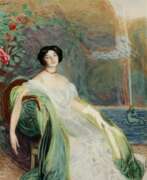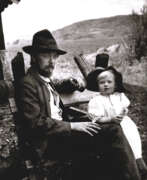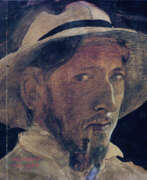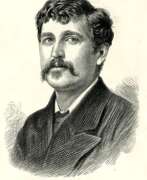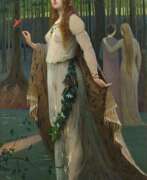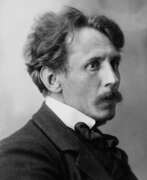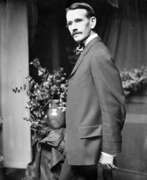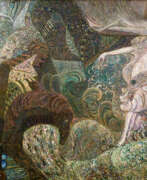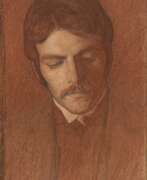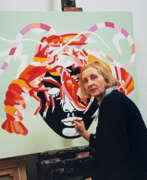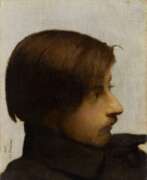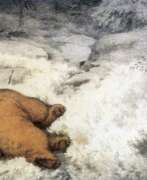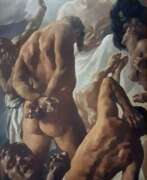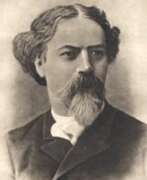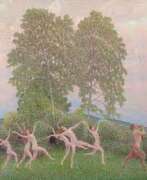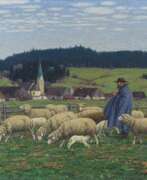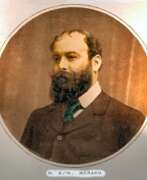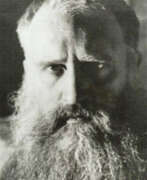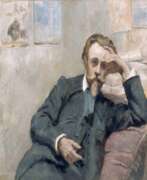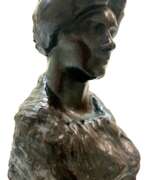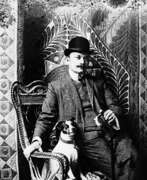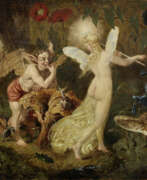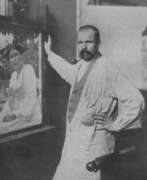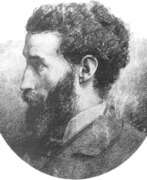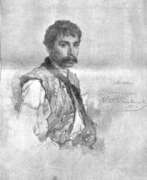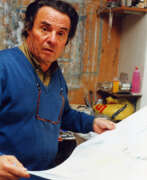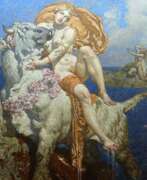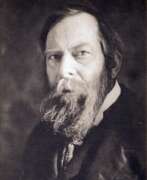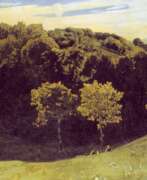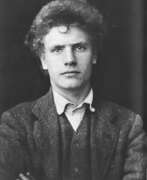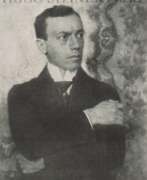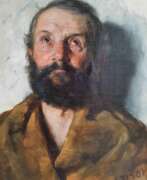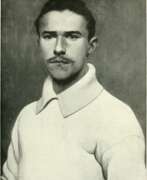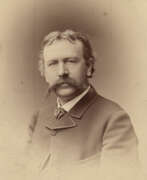Mythological painting Symbolism
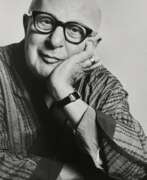

Eugène Berman was a Russian-born American painter and stage designer associated with the Surrealist and Neo-Romantic movements.
Eugene Berman's work often portrayed dreamlike landscapes, architectural structures and enigmatic figures. Berman was known for his meticulous attention to detail, rich colour palette and sense of theatricality in his compositions.
In his paintings, Berman created a world of poetic and mysterious atmosphere, evoking a sense of melancholy and introspection. His subjects often included mythological or allegorical figures, ruins and stage sets. His work had a surrealistic quality, mixing reality and imagination.
Eugène Berman also made a significant contribution to set design for theatre productions, particularly in collaboration with his wife, Leonora Carrington, a renowned surrealist painter. Their joint artistic vision brought surreal and fantastical elements to the stage, enhancing the overall theatrical impression.
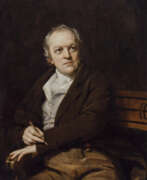

William Blake was an English poet, painter, and printmaker. Largely unrecognised during his life, Blake is now considered a seminal figure in the history of the poetry and visual art of the Romantic Age. What he called his "prophetic works" were said by 20th-century critic Northrop Frye to form "what is in proportion to its merits the least read body of poetry in the English language". His visual artistry led 21st-century critic Jonathan Jones to proclaim him "far and away the greatest artist Britain has ever produced". In 2002, Blake was placed at number 38 in the BBC's poll of the 100 Greatest Britons. While he lived in London his entire life, except for three years spent in Felpham, he produced a diverse and symbolically rich collection of works, which embraced the imagination as "the body of God" or "human existence itself".
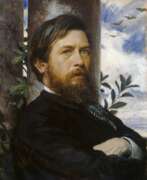

Arnold Böcklin was a Swiss symbolist painter.
Influenced by Romanticism, Böcklin's symbolist use of imagery derived from mythology and legend often overlapped with the aesthetic of the Pre-Raphaelites. Many of his paintings are imaginative interpretations of the classical world, or portray mythological subjects in settings involving classical architecture, often allegorically exploring death and mortality in the context of a strange, fantasy world.


Konstantin Fyodorovich Bogaevsky (Russian: Константин Фёдорович Богаевский), a Russian painter renowned for his Symbolist landscapes, was a significant figure in the art world between the late 19th and early 20th centuries. Born in Feodosia, Crimea, to an old Italian-German family, Bogaevsky's initial art education came from Ivan Aivazovsky. His formative years were spent at the Imperial Academy of Arts under Arkhip Kuindzhi, where despite facing criticism and temporary expulsion for "lack of talent," Kuindzhi's protection and faith in his abilities paved the way for Bogaevsky's future successes.
Bogaevsky's travels to Italy and France in 1898 introduced him to the works of Claude Lorrain, who Bogaevsky considered his true mentor. This experience, coupled with a later discovery of Andrea Mantegna's paintings in 1911, significantly influenced his work. His artistry is noted for its dream-like symbolist landscapes, often of an imaginary land known among his circle as "Bogaevia." Maximilian Voloshin's essays, titled "Konstantin Bogaevsky," played a crucial role in popularizing Bogaevsky's work, drawing parallels between him and Nicholas Roerich.
Throughout his career, Bogaevsky was affiliated with several art groups, including Mir iskusstva, Union of Russian Artists, and Zhar-Tsvet. His exhibitions, notably the 1906 Exposition de l'Art Russe organized by Sergei Diaghilev, highlighted his unique blend of Symbolism and later influences from Renaissance masters like Mantegna, Dürer, and Altdorfer. Despite the October Revolution driving him into relative obscurity, Bogaevsky's legacy as a master of Symbolist landscapes endures, with works like the 1932 "Port of an Imaginable City" still celebrated for their artistic value.
Bogaevsky's works are represented in major museums, including the Tretyakov Gallery, Russian Museum, and Feodosia Art Gallery. His death in Feodosia during a Soviet air raid in 1943 left behind a legacy enriched by his exploration of historical landscapes and symbolist vistas, immortalizing him as a visionary of his time.
For collectors and experts in art and antiques, Bogaevsky's oeuvre offers a fascinating journey into the melding of historical reverence and symbolist imagination. His works, steeped in the influences of European masters and his unique vision of an imaginary land, continue to captivate and inspire. To stay updated on exhibitions and auction events featuring Konstantin Fyodorovich Bogaevsky's work, signing up for updates is highly recommended. This subscription will ensure you are always informed about new sales and the opportunity to own a piece of this historical and symbolist art legacy.
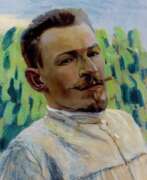

Victor Elpidiforovich Borisov-Musatov (Russian: Ви́ктор Эльпидифо́рович Бори́сов-Муса́тов) was a distinguished Russian artist celebrated for his unique contribution to the Post-Impressionist movement, combining elements of Symbolism, realism, and a decorative style that was all his own. Born in 1870 in Saratov, Russia, into the family of a former serf, Borisov-Musatov overcame early challenges, including a spinal injury that left him humpbacked, to emerge as a pivotal figure in Russian art. His education spanned the Moscow School of Painting, Sculpture and Architecture, and the Imperial Academy of Arts in Saint-Petersburg, further enriched by studies in Paris under the tutelage of Fernand Cormon. His admiration for French contemporaries, especially Pierre Puvis de Chavannes and Berthe Morisot, profoundly influenced his artistic direction.
Borisov-Musatov is renowned for his lyrical, evocative works that often depict the serene and idyllic life of the 19th-century Russian nobility, set against the backdrop of their estates. This half-illusory world, which he masterfully created, reflects a deep nostalgia and a retreat from the industrial harshness of his time. By integrating figures seamlessly into the landscapes, as seen in masterpieces like "The Pool" (1902) and "The Phantoms" (1903), he achieved a harmony that resonates with viewers for its beauty and tranquility. His use of mixed media, including tempera, watercolor, and pastel, allowed for subtle visual effects, making his works distinctive in their soft, dreamlike quality.
Borisov-Musatov's legacy extends beyond his paintings; he was a significant figure in the Russian Symbolist movement and a founding member of the Moscow Association of Artists. His works, which provide a poignant, poetic commentary on the era he lived in, are celebrated in Russian and international art circles alike. Notable paintings like "The Pool" and "The Phantoms" not only highlight his technical skill but also his ability to evoke emotion and atmosphere, making them favorites among collectors and art enthusiasts.
For collectors and experts in art and antiques, Borisov-Musatov's oeuvre offers a fascinating glimpse into the Russian Symbolist movement and the broader cultural milieu of the late 19th and early 20th centuries. His works, preserved in museums and private collections around the world, continue to enchant and inspire.
For those interested in staying informed about new product sales and auction events related to Victor Elpidiforovich Borisov-Musatov, subscribing for updates is highly recommended. This subscription ensures that enthusiasts and collectors alike will not miss the opportunity to own a piece of this remarkable artist's legacy, encapsulating the elegance and serenity that define his work.
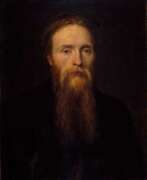

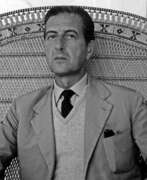

Fabrizio Clerici was an Italian painter, draftsman, illustrator, scenographer and architect.
Clerici earned a degree in architecture and was greatly influenced by antiquities, Renaissance and Baroque painting and architecture. In 1943, Clerici held his first solo exhibition at the Galleria dell'Arte Cairola in Milan, featuring drawings, watercolors, lithographs and etchings. His first book illustrations belong to the same period.
In 1947, Clerici began a prolific career in theater, ballet and opera with his debut as a stage designer in a production of George Bernard Shaw's play Mrs. Warren's Profession. The following year he participated for the first time in the Venice Biennale. There he met Salvador Dalí and created the sets and costumes for Igor Stravinsky's Orpheus, which was performed at the La Fenice Theater. In 1949 he created large-scale architectural fantasy paintings.
The further life of the multifaceted artist Fabrizio Clerici was full of work in a variety of fields of art, creative successes and exhibitions. His work has been exhibited in many museums in the United States, including MoMA and the Guggenheim Museum, as well as in France, such as the Pompidou Center.
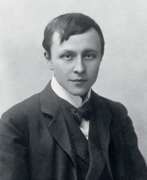

Alfred Kubin was an outstanding Austrian engraver, illustrator and writer, and a prominent representative of the Symbolic and Expressionist trends in the visual arts in the first half of the 20th century. Alfred Kubin's works are full of phantasmagoric and grotesque depictions of dreams, motifs of desolation and fear.
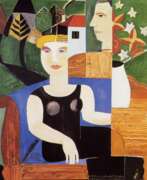

Gustave Franciscus De Smet was a Belgian painter. Together with Constant Permeke and Frits Van den Berghe, he was one of the founders of Flemish Expressionism. In 1908, he and his wife followed Léon to the artists' colony in Sint-Martens-Latem. There, they initially came under the influence of Luminism and the painter Emile Claus, who lived in nearby Astene. At the beginning of World War I, he and his family joined his friend, Van den Berghe, and fled to the Netherlands. From 1914 to 1922, they moved about, visiting and staying at the art colonies in Amsterdam, Laren and Blaricum.[2] His meeting with the Expressionist painter Henri Le Fauconnier marked a turning point in his style which, up until then, owed much to Cubism. In 1927, he settled in Deurle. It was there that his mixture of Expressionism and Cubism peaked, with a series of works depicting circus, fairground and village scenes. After his death in Deurle at the age of sixty-six, his house was preserved as a local museum.
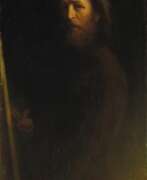

Karl Wilhelm Diefenbach was a German artist of the late 19th and early 20th centuries. He is known as a painter, graphic artist, representative of Symbolism and Art Nouveau style, as well as a public figure, the creator of the commune Himmelhof.
Diefenbach gained fame as an artist while he was still a young man. He made a successful living by creating illustrations for children's books and watercolor copies. In 1882, he announced the creation of his own doctrine, which included ideas about living in harmony with nature, rejecting monogamy and religion, practicing naturism and vegatarianism. The artist then also created the famous 68-meter frieze work "Per aspera ad astra". Diefenbach became a major artist on the island of Capri, while in his homeland his work was neglected.
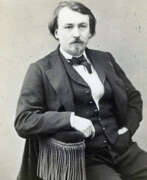

Gustave Doré, full name Paul Gustave Louis Christophe Doré, was a French painter, sculptor, graphic artist, illustrator, and cartoonist.
Doré was very industrious and prolific: he created more than 10,000 illustrations for art books as well as the Bible. He decorated the works of Rabelais, Balzac, Cervantes, Dante and Milton with his lively drawings, making Doré's name famous. He had a special gift for illustrating nature and fairy tales.


Marc Eemans was a Belgian painter, poet and art historian, one of the pioneers of constructivist abstraction.
In 1925, Eemans joined the Surrealist artists Dali and Magritte, with whom he held joint exhibitions. And soon the poet's fame eclipsed his success as a painter. In 1930, Eemans made his debut as a poet in Vergeten te worden: 10 lijnvormen, beïnvloed Door 10 woordvormen. Influenced by Symbolism, he calls his poetry "gnostic surrealism". In 1938 he publishes a collection of poems, Visioen Woli, and others.
His artistic and political stance during World War II led to a break with Magritte and others.
In addition to poetry collections, Eemans wrote essays on a variety of subjects, including modern painting and architecture.


Henri Fantin-Latour was a French painter and lithographer renowned for his exquisite flower paintings and insightful group portraits of Parisian artists and writers. His artistic journey began in Grenoble, where he was born in 1836, but it flourished in Paris, where he moved at a young age to study art. Despite his associations with Impressionists like Édouard Manet and Claude Monet, Fantin-Latour carved his unique path, focusing on still life and portraiture rather than adopting the Impressionist style.
Henri Fantin-Latour's knack for capturing the essence of his subjects is evident in his group portraits, which were not just mere representations but insightful depictions of the artistic and literary circles of his time. His notable works like "A Studio at Les Batignolles" illustrate the camaraderie among artists like Manet, Renoir, and Monet, offering a window into the vibrant Parisian art scene of the 19th century. His still lifes, particularly his flower paintings, are celebrated for their realism and delicate precision, making them a favorite among collectors and art enthusiasts.
In addition to his painting, Henri Fantin-Latour's lithographs, inspired by classical music and imbued with a poetic and symbolic quality, reveal another dimension of his talent, showcasing his ability to transcend the boundaries of realism and delve into the realm of imagination.
For art collectors and experts, Henri Fantin-Latour's works offer a blend of technical mastery and a deep understanding of the interplay between art, music, and literature. His contributions to the art world are remembered and celebrated in museums around the globe, where his works continue to inspire and captivate audiences.
For those interested in exploring more about Henri Fantin-Latour's life and works, visiting exhibitions or keeping abreast of auctions featuring his art can provide valuable insights into his creative genius. To stay updated on related events and opportunities, consider subscribing to updates from art institutions or galleries specializing in 19th-century French art.
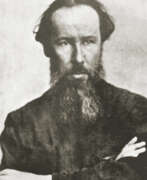

Vladimir Andreyevich Favorsky (Russian: Владимир Андреевич Фаворский) was a distinguished Russian artist and educator, renowned for his profound contributions to the realms of printmaking, illustration, and theory of art. Born into a milieu rich in culture and intellectual pursuit, Favorsky's work transcended the conventional boundaries of art, integrating elements of sculpture, painting, and graphic design, thereby redefining the aesthetic parameters of his time.
Favorsky's artistic philosophy was grounded in the belief that art should be a reflection of reality, yet imbued with the artist's personal vision and inner world. This approach led him to explore various mediums, yet he is most celebrated for his woodcuts and book illustrations. His ability to blend classical techniques with innovative narratives made his works timeless, appealing to collectors and art enthusiasts alike. Favorsky's contributions were not confined to his own creations; as a revered educator at the Moscow Printing Institute, he influenced generations of artists, instilling in them a deep appreciation for the cultural and historical significance of art.
Among his notable works, Favorsky's illustrations for classics of Russian literature stand out, capturing the essence of the narratives with striking visual imagery. While specific pieces in museums or galleries could not be verified without current research, his influence permeates the Russian art scene, with his works held in high esteem by collectors around the globe.
For collectors and experts in art and antiques, Favorsky's oeuvre represents a bridge between traditional and modern artistic expressions, offering a rich tapestry of themes and techniques to explore. His legacy continues to inspire, serving as a testament to the enduring power of artistic innovation and vision.
For enthusiasts eager to delve deeper into Favorsky's world, we invite you to sign up for updates. This subscription ensures you're the first to know about new product sales and auction events related to Vladimir Andreyevich Favorsky, without overwhelming your inbox. Embrace the opportunity to enhance your collection with pieces from a master of Russian art and culture.
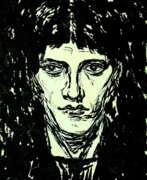

Nikolai Petrovich Feofilaktov (Russian: Николай Петрович Феофилактов) was a Russian graphic artist and a prominent figure in the Moscow art Nouveau and symbolism movements. Born in Moscow in 1878, Feofilaktov was a self-taught artist in painting and music, deeply influenced by Mikhail Vrubel and the graphics of Western European Jugendstil. Notably, in 1904, he participated in the "Scarlet Rose" exhibition, establishing connections with the "Blue Rose" artists and participating in their exhibitions. Feofilaktov was notably influenced by the work of Aubrey Beardsley, earning him the nickname "Moscow Beardsley" or "bergsmannen" due to his intricate and diletante style. His graphic work, characterized by its whimsical and slightly naive depiction of morbid fantasies, masks, and mythical creatures, was well-received for its artistic merit and distinctive Moscow style plasticity.
After 1910, Feofilaktov's popularity waned, and he shifted his focus to painting, working in the publishing house "Academia" from 1933 to 1937. His early success was marked by his association with the magazine "Vesy" and the Symbolist movement in Moscow, showcasing his ability to blend graphic art with literary culture. Feofilaktov's work was a critical reflection of the spirit and aspirations of Russian symbolism's "second wave," highlighting his significant contributions to Russian graphic art and symbolist literature.
Feofilaktov's artworks have been recognized and valued in the art market, with his pieces being auctioned and collected internationally. This recognition underscores the enduring appeal and historical significance of his contributions to Russian art and symbolism.
For collectors and experts in art and antiques, Nikolai Petrovich Feofilaktov's work represents a unique blend of Russian symbolism and Moscow art Nouveau, making his pieces highly sought after. His influence on and contributions to the Russian art scene during a pivotal period in its development continue to be celebrated and studied. To stay updated on new product sales and auction events related to Feofilaktov, sign up for updates. This subscription will ensure that you are informed about opportunities to acquire works by this distinguished artist.
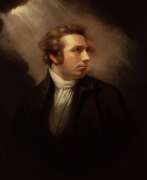

Henry Fuseli (German: Johann Heinrich Füssli) was a Swiss painter, draughtsman and writer on art who spent much of his life in Britain. Many of his works, such as The Nightmare, deal with supernatural subject matter. He painted works for John Boydell's Shakespeare Gallery, and created his own "Milton Gallery". He held the posts of Professor of Painting and Keeper at the Royal Academy. His style had a considerable influence on many younger British artists, including William Blake.
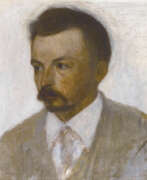

Vilhelm Hammershøi was a Danish painter of predominantly interiors, a representative of the Symbolist movement.
Vilhelm studied at the Royal Danish Academy of Fine Arts in Copenhagen, and a few years later at the 1889 World Exhibition in Paris, four of his paintings were exhibited in the Danish pavilion. Hammershøi was the last significant painter in nineteenth-century Danish art. He painted against a background of contemporary experience, but his painting never deviated from the basic rules of Danish Golden Age paintings.
At first his motifs alternated between figure and landscape painting, and later Hammershøi became truly an interior painter. Rooms became a constant source of subjects for him, and the walls and windows that form the boundary to the world almost literally became the backdrop for his paintings. People in his paintings, if present, then as silent statues, completely immersed in their thoughts. All his works, whether portraits, interiors or landscapes, are full of silence, peace and melancholy.
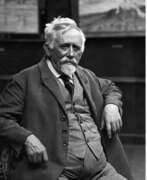

Hermann Hendrich was a German painter of the last quarter of the nineteenth and first third of the twentieth centuries. He is known as a painter known for his works in the Romantic and Old Germanic style.
Hendrich considered the canvases and interior for the "Walpurgis Hall" near Thale, created in 1901, to be the pinnacle of his work. For the "Nibelungen Hall" on Mount Drachenfels, opened in 1913 in honor of Richard Wagner, he painted 12 canvases based on ancient Germanic legends. The artist also created illustrations for Goethe's works, as well as exhibitions in the "Hall of German Sagas" in Solingen.
Hendrich was a co-founder of the Verdandi Union, which opposed modernism in art. A square in Berlin, Gendrichplatz, is named in his honor.
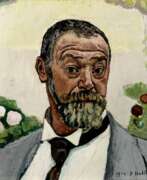

Ferdinand Hodler was one of the best-known Swiss painters of the nineteenth century. His early works were portraits, landscapes, and genre paintings in a realistic style. Later, he adopted a personal form of symbolism which he called "parallelism".
Much of Hodler's work is in public collections in Switzerland. Other collections holding major works include the Musée d'Orsay in Paris, the Metropolitan Museum of Art in New York, and the Art Institute of Chicago.
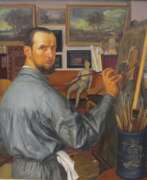

Aleksandr Evgenevich Iakovlev (Russian: Александр Евгеньевич Яковлев), a Russian painter, graphic artist, and designer, left an indelible mark on the world of art with his unique blend of classical and orientalist styles. Born in Saint Petersburg, Russia, in 1887, Iakovlev was part of the vibrant Russian artistic community that contributed significantly to the neo-classical and orientalist movements. His extensive travels across Mongolia, China, Japan, Africa, Syria, Iran, and Afghanistan enriched his art, leading to a prolific output of portraits, landscapes, still lifes, and figure compositions that combined elements of Italian Renaissance with Russian Primitivism.
Iakovlev's early involvement with the Mir Iskusstva exhibition in 1915 showcased his talent but also highlighted the mixed reactions from critics and the Academy of Arts, signaling his departure from traditional academic confines. His scholarship to study in the Far East and subsequent travels profoundly influenced his work, as seen in his orientalist paintings and ethnographic drawings. This period of exploration culminated in his significant contributions as an official artist on the Citroën expeditions across Central Africa and Asia, where he captured the essence of the diverse cultures he encountered.
His works, such as "Three Women in a Box at the Theatre" and his participation in designing the Prival Komediantov artistic cabaret, exemplify his mastery of merging traditional subjects with a modernist touch. Serving as the Director of the Painting Department at the School of the Museum of Fine Arts, Boston, between 1934 and 1937, Iakovlev influenced the art scene beyond the Russian borders before his death in Paris in 1938.
Iakovlev's legacy is preserved in museums and galleries worldwide, celebrating his contributions to bridging cultures through art. His ability to document his travels and experiences in such a vivid and artistic manner has left a lasting impact on the appreciation of cultural diversity in the art world.
For collectors and experts in art and antiques, Aleksandr Evgenevich Iakovlev's works represent a convergence of classical artistry and exploratory zeal, making them highly sought after. His pieces not only capture the beauty of the subjects he portrayed but also serve as a window into the cultures and landscapes that inspired him.
For updates on exhibitions and auction events featuring Aleksandr Evgenevich Iakovlev's works, sign up to stay informed about new discoveries and opportunities to add to your collection.
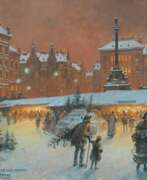

Georg Janny was an Austrian landscape painter and set designer.
He worked as a scene painter in the studios of Carlo Brioschi and Johann Kautsky, alongside Alfons Mucha, and was a member of the Dürerbund.
He also painted landscapes and figures, including scenes from fairy-tales or imaginary worlds that are reminiscent of the works of Arnold Böcklin or Gustave Doré.
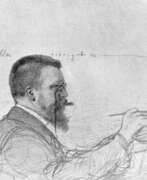

Ferdinand Keller was a German painter of the last third of the nineteenth and early twentieth centuries. He is known as a genre and historical painter as well as a teacher.
Keller earned his first major success in 1867 with his painting The Death of King Philip II of Spain. In his monumental works, he celebrated historical, dynastic, and cultural episodes in the history of Germany and Baden. One of his famous works is the painting "Apotheosis of Kaiser Wilhelm I", which was purchased by Kaiser Wilhelm II. Keller's works now grace the halls of theaters including the Baden State Theater and the Semper Opera in Dresden.
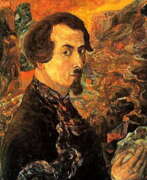

Vasily Dmitrievich Milioti (Russian: Василий Дмитриевич Милиоти) was a prominent Russian painter and graphic artist, whose artistic journey has left a significant imprint in the realms of painting and graphic design. Born into a culturally enriched environment in 1875, Milioti's oeuvre is characterized by its diverse application of mediums, including watercolor, gouache, and oil, showcasing his versatility and mastery over each.
Milioti's contributions to the art world are not only limited to his evocative artworks but also extend to his influential role within the artistic associations of his time. He was an integral member of "Blue Rose," a collective of artists that championed symbolism and mysticism in Russian art, and actively contributed to the "World of Art" movement. His involvement with the Moscow Association of Artists (Moscow Art Theatre) and the Group of 22 further exemplified his commitment to the development of Russian art.
Among his notable works, "The Poet" (1909) stands out for its intricate composition and the depth of its thematic expression. This artwork, like many of his others, reflects Milioti's deep exploration of human emotion and the philosophical underpinnings of existence, rendered through a unique stylistic approach that blends realism with symbolic elements.
For collectors and experts in art and antiques, Milioti's works represent not only the pinnacle of Russian symbolist art but also an invitation to delve into the complex interplay of colors, forms, and emotions that define the early 20th-century artistic landscape. His contributions have left an indelible mark on the history of art, making his works highly sought after by connoisseurs and institutions alike.
To stay updated on new product sales and auction events related to Vasily Dmitrievich Milioti, signing up for updates is highly recommended. This subscription ensures you're always in the know regarding the latest developments and opportunities to engage with Milioti's enduring legacy.
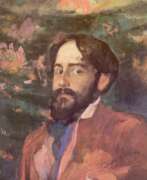

Nikolai Dmitrievich Milioti (Russian: Николай Дмитриевич Милиоти) was a distinguished Russian painter, graphic artist, and stage designer, celebrated for his contribution to the Symbolist movement and his association with the 'Blue Rose' artist group. Born in 1874, Milioti's academic journey took him through prestigious institutions like the Moscow University and the Sorbonne. He honed his skills under the tutelage of notable figures such as Abram Arkhipov, Leonid Pasternak, and Valentin Serov at the Moscow School of Painting, Sculpture and Architecture, alongside private studies under Konstantin Korovin and in Paris at the Académie Julian with Jean-Paul Laurens and Jean-Joseph Benjamin-Constant.
Milioti's artistic vision was deeply intertwined with Symbolism, often exploring mythological themes, portraits, and still lifes. His works are known for their decorative elegance and emotional depth, embodying a unique blend of Symbolism with hints of Fauvism and primitivism. This blend was inspired by the mystical and emotive qualities seen in the works of Mikhail Vrubel and others, setting a distinct tone that captured the essence of the Symbolist quest for aesthetic perfection and deep psychological exploration.
His career saw significant recognition in Europe, where he became a member of the Salon d'Automne in Paris from 1906 and exhibited his works across the continent. Milioti's art was not just limited to canvases; he also made notable contributions to the stage, bringing his symbolic and fauvist vision to theatrical design. The legacy of his works, characterized by their dream-like quality and rich symbolism, continues to inspire and captivate art lovers and collectors worldwide.
For those intrigued by the works of Nikolai Dmitrievich Milioti and the Symbolist movement, staying updated on exhibitions and sales of his works is essential. Collectors and experts in art and antiques can sign up for updates to receive notifications about new product sales and auction events related to Milioti, ensuring they never miss an opportunity to own a piece of this mesmerizing artist's legacy.


Gustave Moreau was a French artist and an important figure in the Symbolist movement. Jean Cassou called him "the Symbolist painter par excellence". He was an influential forerunner of symbolism in the visual arts in the 1860s, and at the height of the symbolist movement in the 1890s, he was among the most significant painters.
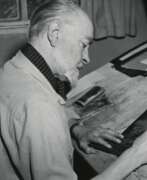

Kay Rasmus Nielsen is a Danish illustrator and one of the leading artists of the Golden Age of Illustration in the early 20th century. Nielsen was a prolific collaborator with the Disney Company, for which he created many narrative sketches and illustrations, including for the feature film Fantasia.
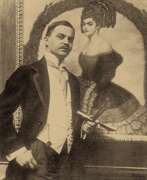

Hanns Pellar was an Austrian painter and illustrator. He studied painting at the Vienna Academy of Fine Arts under Heinrich Lefler.
Hanns Pellar was one of Munich's most prominent painters, whose quality craftsmanship and very pleasing images were characteristic of the Prince Regent's era. As a "favourite of various respected Darmstadt families", he produced a large number of portraits, especially of ladies, which eventually earned him the nickname "painter of elegance".
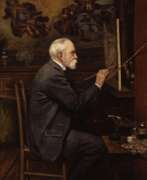

Edward John Poynter was a prominent British painter, known for his historical and mythological artworks that resonate with art collectors and experts. Born in Paris and educated in Britain, Poynter's career flourished with his detailed and evocative paintings, like "Israel in Egypt" and "The Visit of the Queen of Sheba to King Solomon," which reflect his profound historical knowledge and artistic skill. These works are celebrated for their intricate detail and vibrant storytelling, captivating viewers and holding significant positions in galleries and Masonic lodges globally.
Edward John Poynter's dedication to art education was evident through his roles as the Slade Professor at University College London and the principal of the National Art Training School. His contribution extended to administrative roles, notably as the Director of the National Gallery, where he played a pivotal role in the establishment of the Tate Gallery. His legacy in the art world is also marked by his presidency at the Royal Academy, demonstrating his influence and standing in the British art scene.
For those intrigued by Edward John Poynter's mastery and the historical depth of his work, his contributions to art literature, such as "Ten Lectures on Art," offer further insight into his artistic philosophy and approach. These works underscore his commitment to integrating art and archaeology, providing a richer understanding of his creative process and the era he depicted.
For art collectors and enthusiasts interested in Poynter's work and related auction events, staying updated through a subscription service can be invaluable. This ensures you receive timely information on sales and exhibitions featuring Edward John Poynter's art, allowing you to engage deeply with his historical and artistic legacy.
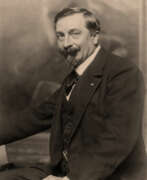

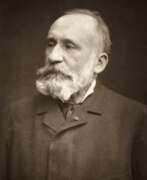

Pierre Cécile Puvis de Chavannes, a prominent French painter, was known as "the painter for France." His influential mural paintings showcased a classicizing style, often referencing visions of Hellenistic Greece.
Puvis received numerous commissions for public and private institutions across France, with significant works in Amiens, Marseille, Lyon, Poitiers, and Paris. His success as a 'painter for France' stemmed from his ability to appeal to various ideologies of the time. In addition to murals, Puvis created easel paintings, some of which can be found in galleries worldwide. Despite his significance, he was not fully appreciated during his lifetime, and his work remains a subject of ongoing art criticism.


Elling Reitan is a Norwegian symbolist painter.
Today Reitan is one of the most recognized and sought-after artists of the country. His paintings are characterized by symbolism and color, and the viewer is captivated by the beautiful and pure colors. He is also proficient in most techniques and works in lithography, watercolor and pastel.
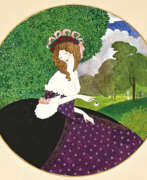

Anna Remizov-Vasilyeva (Russian: Анна Владимировна Ремизова-Васильева), born between 1880 and 1890 in Saint Petersburg and passing away in 1928, was a distinguished Russian artist and graphic designer, renowned under the pseudonym "Miss." Her artistic journey was significantly shaped by her contributions to the publication "Satyricon," active from 1908 to 1914, where her work gained notable recognition. Her creations reflect a profound influence from Konstantin Somov and the English graphic artist Aubrey Beardsley, illustrating a unique blend of the 18th-century galant age's charm and an ironic nostalgia, marked by the sensual depiction of figures, a characteristic feature of her work.
Remizov-Vasilyeva's artistic expressions found their pinnacle in the album "Cupid's Pranks," a collection of color and black-and-white illustrations accompanied by poems and aphorisms, showcasing galante scenes in boudoirs and gardens, executed in the genre of symbolic graphic art. This work exemplifies her meticulous attention to detail and the incorporation of 18th-century stylistic elements. Her legacy is preserved in various pieces, including those exhibited for the benefit of artists' infirmaries, such as "Glory to the War Victims" and "On the Battlefield," among others.
Collectors and experts in art and antiques are encouraged to delve into the enchanting world of Anna Remizov-Vasilyeva, a pioneer of the boudoir direction in graphic art. Her oeuvre offers a window into the artistically galant era, enriched with a modern twist that continues to captivate audiences. For updates on sales and auction events related to Remizov-Vasilyeva's work, sign up for our newsletter, ensuring you stay informed about the latest discoveries and opportunities to own a piece of this remarkable artist's legacy.
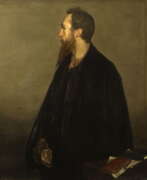

Charles de Sousy Ricketts was a British artist, illustrator, author and printer, known for his work as a book designer and typographer and for his costume and scenery designs for plays and operas.
Ricketts was born in Geneva to an English father and a French mother and brought up mainly in France. In 1882 he began studying wood engraving in London, where he met a fellow student, Charles Shannon, who became his lifelong companion and artistic collaborator. Ricketts first made his mark in book production, first as an illustrator, and then as the founder and driving force of the Vale Press (1896–1904), one of the leading private presses of the day, for which he designed the type and illustrations. A disastrous fire at the printers led to the closure of the press, and Ricketts turned increasingly to painting and sculpture over the following two decades.
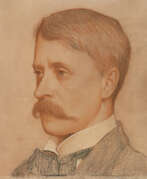

Frederick Cayley Robinson was an English artist, creating paintings and applied art including book illustrations and theatre set designs. Along with a number of other British artists, Cayley Robinson continued to paint striking Pre-Raphaelite and Victorian subjects well into the twentieth century despite this approach becoming deeply unfashionable. His work has been examined in a PhD thesis by Alice Eden and an exhibition Modern Pre-Raphaelite Visionaries at Leamington Spa Art Gallery & Museum.


Scipione, birth name Gino Bonichi, is an Italian painter known for his contribution to the Italian Scuola Romana art movement. He was one of the pioneers of this movement, which sought to combine elements of avant-garde styles with traditional Italian art.
Schipione's artistic style can be characterised as expressive and emotional. His paintings often carry a sense of raw intensity and psychological depth, reflecting the internal struggles and complexities of the human experience. Using bold strokes, vivid colours and distorted figures, he created visually appealing and emotionally intense works of art.
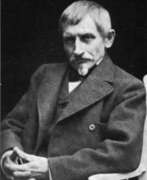

Stephan Abel Sinding is a Norwegian and Danish sculptor.
Stephan comes from a creative family, his brothers being composer Christian Sinding and painter Otto Sinding. He entered the Royal College of Drawing and studied art with Albert Wolf in Berlin. In France in 1874 he was impressed by the works of Auguste Rodin and Paul Dubois, and as a result Stephan Sinding abandoned the popular neoclassical movement of the time and moved towards a style inspired by Michelangelo, with flowing lines, raising themes of Scandinavian mythology as well as reality and eroticism.
Sinding created many realistic but also deeply symbolic sculptures, one of which, Mother in Captivity, won him the Grand Prix at the World's Fair in 1889.
In 1883 Stephan Sinding moved to Copenhagen, later becoming a Danish citizen and professor at the Academy of Fine Arts in Copenhagen. In 1910 he settled in Paris, where he lived and worked until his death in 1922. He became one of Norway's most famous sculptors, along with Gustav Vigeland.


Simeon Solomon was a British painter associated with the Pre-Raphaelites who was noted for his depictions of Jewish life and same-sex desire. His career was cut short as a result of public scandal following his arrests and convictions for attempted sodomy in 1873 and 1874.
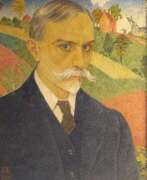

Joseph Edward Southall was a British painter and leader of the Birmingham Group of Craftsmen Artists.
At the age of 21, while traveling in France and Italy, Southall was fascinated by Italian Renaissance painters. He later created many large tempera paintings, mostly of mythological and religious subjects, which were exhibited throughout Europe as well as in the United States. The artist also painted landscapes and many portraits in watercolor and oil.
With the outbreak of World War I, Southall became more involved in the anti-war struggle, writing pamphlets and drawing cartoons for books and magazines. Along with other members of the Birmingham Group, Southall also practiced various crafts including murals, furniture decoration, lace, book illustration and prints.


Léon Spilliaert was a Belgian artist. He is known for his unique style of symbolism, with many of his works featuring dream-like landscapes, eerie still lifes, and enigmatic figures.
Spilliaert grew up in a wealthy family, and he initially studied architecture before turning to art. He was largely self-taught, and his work was heavily influenced by the Belgian symbolist movement, as well as the works of artists such as James Ensor and Edvard Munch.
Spilliaert was particularly interested in exploring the mysteries of the human psyche, and many of his works reflect a sense of unease or uncertainty. He often used strong contrasts of light and shadow to create a sense of drama and tension in his works, and his use of color was often muted and subdued.
Despite his success as an artist, Spilliaert was a deeply private individual, and he rarely exhibited his work during his lifetime. He continued to work throughout his life, however, producing a large body of haunting and enigmatic works that continue to captivate audiences today.
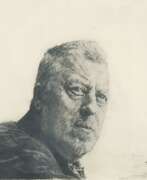

Ferdinand Staeger was a Czech-born German symbolist painter and graphic artist, illustrator and fabric designer.
Staeger studied at the School of Technical Design in Brno and then the School of Applied Arts in Prague, from 1908 he lived in Munich and collaborated with the magazine Jugend. He was a participant in the First World War, his war drawings are characterized by humanity. After the war he illustrated books by Gerhard Hauptmann, Josef von Eichendorff, Eduard Mörike and Adalbert Stifter with great success.
During the Third Reich, Staeger collaborated with the authorities by painting several propaganda pictures, for which he was awarded the title of professor. In 1943 he lost his home in Munich to Allied bombs and many works were lost.
After World War II, he painted in an impressionist style, creating paintings of mythical, mystical, symbolic and religious themes. Many works belong to the genre of "magic realism". Staeger is also known as a tapestry designer, master of etching and ex-libris, and was a member of the Association of German Artists. His wife Sidonie Springer (1878-1937) was also a painter and graphic artist.
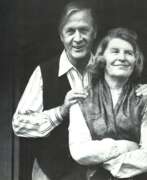

Gyorgy Stefula is a German painter, illustrator, costume designer and stage designer.
Stefula studied at the Academy of Fine Arts in Hamburg and the Higher School of Painting in Altona, and married Dorothea Hüter, who became his creative collaborator. After World War II, he participated in numerous exhibitions in Germany and abroad. Together with Dorothea, they frequently exhibited their work and collaborated on several projects, including stage and costume design for the National Opera in Munich.
Among Stefula's unique works in the spirit of Henri Rousseau or Pittura Metafisica are imaginary, fantastical landscapes and incredible portraits, magical still lifes and animals; they are full of symbolism and mythological references.


Henry John Stock was a British Pre-Raphaelite painter and representative of the English Romantic tradition.
Henry was nearly blind as a child, but gained his sight when he went to live at Beaulieu in the New Forest. Fully recovered, he attended St. Martin's School of Art and the Royal Academy schools. And apparently the trials of his childhood played a role in the artist's outlook. Stock enjoyed success as a secular portraitist, but his main area of interest has always been fantasy, religious and mythological subjects.
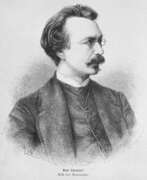

Paul Thumann was a German painter of the second half of the nineteenth and early twentieth centuries. He is known as a portrait painter and book illustrator.
Paul Thumann created drawings that decorated the works of famous authors such as Goethe, Tennyson, Chamisso, Gamerling and Heine. According to critics, his illustrations were characterized by elegance and subtlety of lines, expressiveness of human and poetic images. Stylistically, the master's works approached Art Nouveau, popular at the turn of the XIX-XX centuries. Thumann also created paintings on historical, religious and mythological themes.


Johannes Theodorus Toorop was the foremost representative of symbolism in Dutch painting. He studied painting at the National Academy of Fine Arts in Amsterdam and at the Academy of Fine Arts in Brussels.
Jan Theodor Torop studied the works of the Pre-Raphaelites, which left a deep impression on him. In the late 1880s, Thorop painted in the style of pointillism and became the first Dutch painter to use this technique.
In Belgium the artist was heavily influenced by the work of James Ensor and Torop gradually moved towards Symbolism and Art Nouveau. Graphics and illustrations also featured prominently in his work.
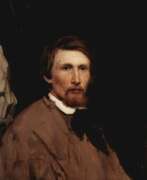

Victor Mikhailovich Vasnetsov (Russian: Виктор Михайлович Васнецов) was a seminal Russian artist, whose contributions to the world of art have left an indelible mark on cultural history. Born into a priest's family in 1848, Vasnetsov's journey into the realms of painting and sculpture was not just a pursuit of aesthetic beauty, but a mission to delve deep into the soul of Russian folklore and history. His works, characterized by their vivid storytelling and intricate detail, bridge the gap between the ethereal world of legends and the tangible reality of Russian cultural identity.
Vasnetsov's oeuvre is a testament to his versatility as an artist, spanning across genres from historical to mythological subjects. Among his most celebrated works are "The Bogatyrs" and "The Knight at the Crossroads," which not only showcase his mastery in painting but also reflect his deep engagement with the themes of heroism and destiny, central to Russian folklore. These masterpieces, housed in prestigious museums like the Tretyakov Gallery in Moscow, continue to captivate audiences with their compelling narratives and exquisite execution.
What sets Vasnetsov apart is not just his artistic skill, but his ability to encapsulate the essence of Russian culture and mythology in his work, making it an invaluable part of Russia's cultural heritage. His paintings are more than just visual spectacles; they are windows into the soul of a nation, narrating stories that have shaped the collective consciousness of the Russian people. For collectors and experts in art and antiques, Vasnetsov's works represent a confluence of historical significance and unparalleled artistic merit.
To stay abreast of the latest updates on sales and auction events featuring the works of Victor Mikhailovich Vasnetsov, we invite you to sign up for our updates. This subscription is tailored specifically for enthusiasts of culture, art, and antiques, ensuring you receive timely information on opportunities to add to your collection of valuable pieces.
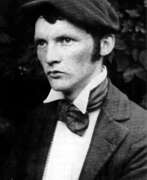

Heinrich Vogeler was a German artist and philosopher, a representative of the German Art Nouveau. A versatile and talented artist, he painted, watercolored, composed poems, designed, designed and decorated. Over time, his style of art changed over a wide range.
During World War I, from 1914 to 1917, Vogeler was on the Eastern Front as a volunteer and made sketches, which resulted in his pacifist sentiments.
In the mid-1920s he visited the Soviet Union several times and his impressions resulted in paintings in his own "complex style: "Karelia and Murmansk" (1926), "Building a New Life in the Soviet Republics of Central Asia" (1927), and "Baku" (1927). In 1931 Vogeler received an invitation to work in the USSR. The coming to power of the Nazis in Germany made it impossible for him to return home, and after Hitler's invasion Vogeler among many was deported to the Kazakh SSR, where he died.
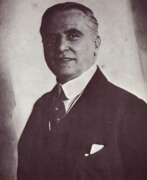



Ludwig von Löfftz was a German artist of the last third of the nineteenth and early twentieth centuries. He is known as a painter and graphic artist, genre painter and landscape painter.
Ludwig von Löfftz created his works in a style close to the works of German and Dutch painters of the XVI-XVII centuries. His works were distinguished by clear drawing, skillful play of light and shadow, as well as deep empathy with the events depicted on the canvas. Among his famous works are "Cardinal, playing the organ", "Greed and Love", "Erasmus and his school", "Old Woman", "Eurydice", "Changers".


Hans von Marees was a German artist of the mid-nineteenth century. He is known as a painter and graphic artist, a representative of symbolism.
Von Marees was a prominent not only practitioner but also art theorist. He created the "Roman Circle" of German artists, whose activities in Italy seriously influenced the development of fine art of the turn. Marees 's work was centered on the theme of harmonious coexistence between man and nature, he sought to achieve the ideal relationship between form and space, as in the art of the ancient Greeks and the Italian Renaissance. At the height of his career, he turned to mythological subjects and developed a sophisticated technique, creating deep and saturated colors with layers of oil paint.
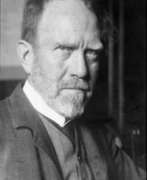

Carl von Marr was an American-born German painter of the late nineteenth and first third of the twentieth centuries. He is known as a painter and teacher, a professor at the Munich Academy of Fine Arts.
Carl von Marr worked in religious, mythological, and domestic genres, and also painted portraits. He received gold medals in Germany and the United States, where his works were exhibited. The master was a member of the board of directors of the German Artists Association.
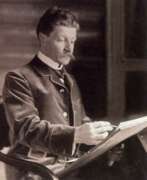

Mikhail Aleksandrovich Vrubel (Russian: Михаил Александрович Врубель), a distinguished Russian artist, was renowned for his profound contributions to the world of art, spanning painting, sculpture, and the decorative arts. Born in Omsk in 1856, Vrubel's unique approach to art, characterized by its intricate detail and vibrant use of color, has captivated art collectors and experts alike. His works are celebrated for their innovative blend of realism and Symbolism, setting him apart in the pantheon of great artists.
Vrubel's oeuvre is notable for its fantastical themes, often drawing on mythological and fairy tale motifs to create deeply atmospheric and emotionally charged pieces. Among his most famous works are "The Demon Seated" and "The Swan Princess," which reside in prestigious Russian museums like the Tretyakov Gallery and the Russian Museum. These pieces exemplify his skill in using color and form to evoke a haunting, otherworldly beauty.
His influence extends beyond his canvas; Vrubel's contributions to theater design and decorative art have left a lasting legacy on the Russian cultural landscape. For art collectors and enthusiasts, Vrubel's work offers a window into the soul of Russian Symbolism, making his pieces highly sought after for their beauty and historical significance.
We invite you to sign up for updates on sales of art pieces and auction events related to Mikhail Aleksandrovich Vrubel. This is a unique opportunity to deepen your understanding of Russian art and to enhance your collection with works from one of its most illustrious figures. Join us in exploring the enduring legacy of Vrubel's artistry.
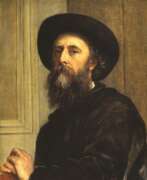

George Frederic Watts was a distinguished British painter and sculptor associated with the Symbolist movement, celebrated for his allegorical works such as "Hope" and "Love and Life." Born in 1817, Watts's career spanned the Victorian era, during which he developed a style that sought to imbue his works with moral and philosophical depth. His ambition was to affect the viewer's mind through "nobility of line and color," aiming to elevate art to a medium of serious reflection and commentary on humanity's condition.
George Frederic Watts's early influences included the Elgin Marbles and the works of Titian, which inspired him to strive for a grandeur in his art that was both morally uplifting and aesthetically profound. He was a part of the vibrant cultural milieu of the Victorian era, mingling with notable figures of the time in the Prinsep circle of bohemians and contributing significantly to the artistic and intellectual life of 19th-century Britain.
Among Watts's most celebrated works are "Hope," featuring a blindfolded figure with a lyre, and "The Sower of the Systems," a visionary piece that prefigured abstract painting and explored themes of creation and the cosmos. This latter work, completed towards the end of his life, exemplifies Watts's lifelong fascination with the interplay between art, science, and spirituality.
George Frederic Watts's legacy is preserved in the Watts Gallery in Compton, Surrey, dedicated to his work, and through his contributions to public art, including the monumental sculpture "Physical Energy" in Kensington Gardens, London. His portraits of prominent Victorians, which include political, literary, and cultural figures, remain highly regarded for their insight and depth.
For those interested in the intersections of art, culture, and history, George Frederic Watts's work offers a rich exploration of Victorian values, aspirations, and anxieties. His enduring influence on British art and his role in the Symbolist movement make his work a key subject of study for collectors and experts in art and antiques.
To stay informed about exhibitions, sales, and events related to George Frederic Watts, signing up for updates is recommended. This will ensure that enthusiasts and collectors alike are always up-to-date on opportunities to engage with Watts's impactful legacy.
